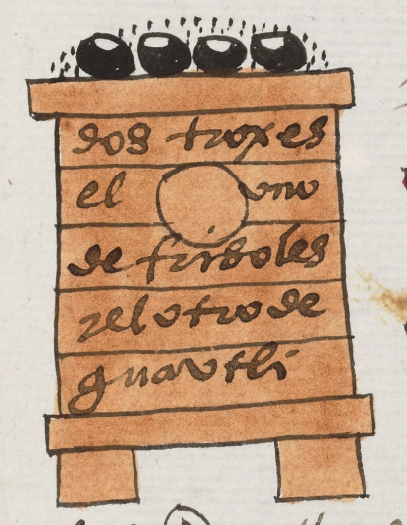huauhtli (Mdz37r)
This iconographic support material for huauhtli (amarant) provides another example of how grains could be presented visually as a series of black dots. We extracted the dots from the beans, with which they are mixed, and we added a few dots to fill in where the beans were located.
Stephanie Wood
The amaranth in question was to be provided as tribute (like taxation in kind) in a large container (troje, in Spanish). Another container of beans was to accompany the container of amaranth. Hence, in the historical contextualizing image, we see at the top of the wooden box both black beans and amaranth.
Stephanie Wood
guavtli
huauhtli
Stephanie Wood
c. 1541, but by 1553 at the latest
Stephanie Wood
huauh(tli), amaranth, https://nahuatl.wired-humanities.org/content/huauhtli
el amaranto
Stephanie Wood
Codex Mendoza, folio 37 recto, https://digital.bodleian.ox.ac.uk/objects/2fea788e-2aa2-4f08-b6d9-648c00..., image 84 of 188.
Original manuscript is held by the Bodleian Libraries, University of Oxford, MS. Arch. Selden. A. 1; used here with the UK Creative Commons, “Attribution-NonCommercial-ShareAlike 3.0 License” (CC-BY-NC-SA 3.0)


